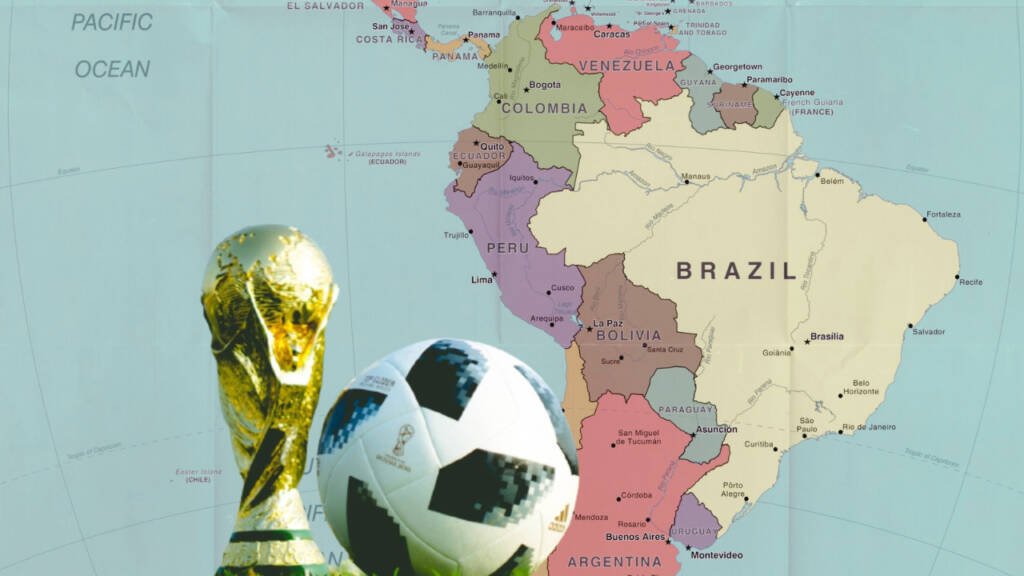Latin America football: What’s common between Pelé, Diego Maradona, Lionel Messi, and Neymar except being greatest football players of all time? They belong to South America.
It’s not just a game, but a way of life, a cultural phenomenon that goes beyond the boundaries of the field. The sport has become an integral part of the region’s history, politics, and identity.
In this video, we will explore these aspects of the game and how it is more than just a game.
Football, or soccer as it’s known in some parts of the world, is the most popular sport in Latin America. In Latin America, football is more than just a sport; it’s a national passion that unites people from different walks of life. It’s not uncommon to see fans of different teams coming together to celebrate their love for the game. Football is a powerful unifier that transcends social, cultural, and economic barriers. It’s a shared experience that brings people together, regardless of their differences.
Historically, football has played a significant role in shaping the identity of Latin America. The sport arrived in the region during the late 1800s, brought by British sailors and merchants. It quickly gained popularity among the local population, and by the early 1900s, football had become an integral part of Latin American culture.
It’s no wonder that the region has produced some of the greatest football players of all time, such as Pelé, Diego Maradona, Lionel Messi, and Neymar. South American nations have won almost half of the 22 World Cup titles all-time.
Football has also played a significant role in the politics of Latin America. It has been used as a tool to mobilize people and express political views. During the 1970s and 1980s, football was used as a way to protest against the military dictatorships that plagued the region. Fans used football stadiums as a space to voice their opposition to the oppressive regimes, and football matches became a battleground for political and social change.
Read more: How Brazil and Argentina pioneered the cinema movement in Latin America
Football has also been used as a tool for resistance against oppressive regimes. Similarly, in Brazil, the Corinthians football team became a symbol of resistance during the military dictatorship of the 1960s and 1970s, due to their outspoken opposition to the regime and their support for workers’ rights.
Today, football continues to play a significant role in Latin American politics. It’s not uncommon for politicians to use football to gain support and connect with their constituents. For example, during the 2018 World Cup, the presidents of Argentina, Brazil, and Mexico all attended matches to show their support for their national teams. Football has become a tool for politicians to connect with the people, and it’s an effective way to generate enthusiasm and support.
Football is also a significant driver of the Latin American economy. The sport generates billions of dollars in revenue each year, and it provides employment opportunities for thousands of people. Football clubs are big business, and many of them have become global brands. Some of the world’s most successful football clubs, such as Boca Juniors, River Plate, Flamengo, and São Paulo FC, are based in Latin America. These clubs have millions of fans around the world, and their success has helped to promote the region globally.
Football also plays a significant role in the cultural expression of Latin America. The sport has inspired music, literature, and art, and it’s a central theme in many cultural events. For example, the Carnaval celebrations in Brazil often feature football-themed floats and costumes. The sport has also been the subject of many films and documentaries, and its influence can be seen in the works of many Latin American writers and artists.
Football has also been used to promote gender equality in Latin America. Women’s football is becoming increasingly popular in the region, and many women’s football clubs have emerged in recent years.
Read more: The extraordinary tale of Punta del Este- One of the fastest growing global destinations
Despite its many benefits, football in Latin America also faces challenges. Corruption, violence, and discrimination are all issues that have plagued the sport in the region. For example, corruption scandals have rocked the sport in Brazil, with many high-ranking officials being indicted for accepting bribes. Violence and hooliganism are also a problem, with some matches being marred by riots and clashes between rival fans.
However, despite these challenges, football remains a powerful force in Latin America. It’s a sport that brings people together, promotes social change, and generates economic opportunities. It’s a symbol of the region’s identity, and it’s an integral part of its culture. As long as there is football in Latin America, there will be a shared passion that unites people from all walks of life.
https://www.youtube.com/watch?v=YSHUyek0jeg
